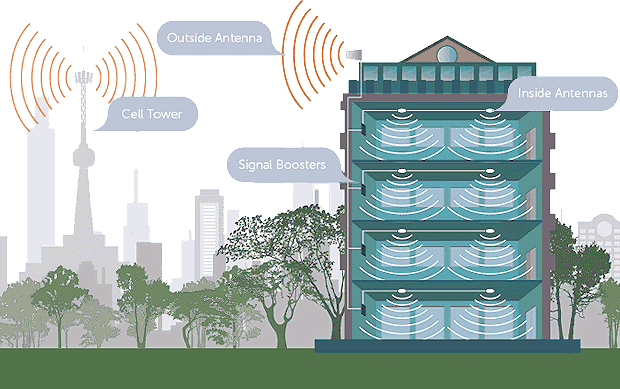Knowledge Base
How do I choose the right system to improve cell signal reception in my building?
There are four key steps to selecting the right cellular DAS or signal booster system for your commercial or public building:

1. Define expectations
It’s critical that you determine ahead of time what your goals are for the project. You’ll need to understand the problem and envision what kind of solution you expect, including:
- What areas in your building have poor cellular reception right now? Is coverage completely nonexistent, or just spotty?
- What carriers do you need to support? For example, do you need to improve signal for just the carrier who supplies your company-issued cell phones, or do you need to improve signal for every phone in your building, regardless of carrier? If it’s a single carrier, how likely are you to switch providers for your company in the future?
- How soon do you want to begin implementation of a cellular booster system, and how soon do you need the project completed?
2. Know your budget
Have an understanding what you can and cannot afford. Price per square foot of improved signal coverage varies depending upon the technology you select. Turnkey passive DAS systems from Powerful Signal range from 50¢ to 70¢ per square foot, and our active DAS systems (like the CEL-FI QUATRA 4000) typically run 60¢ to 80¢ per square foot. Fiber DAS, on the other hand, ranges from $3 to $5 per square foot.
If your budget does not allow for your entire building to be covered, start by identifying and fixing problem zones and mission-critical areas.
3. Select the right system integrator
When choosing the company who will design and install your solution, don’t let “least expensive” be your compass. The integrator needs to be your partner in a successful project, not just the lowest bidder.
Make sure the company you choose knows and understands the business, and has proven experience installing successful solutions in businesses and buildings like yours. The longer they’ve been in business, the more they’ve demonstrated that they can succeed in a changing market.
Be sure they specialize in implementing solutions in buildings of your size. Ask them detailed questions about their process and get a complete understanding how the project will be executed.
4. Equipment selection
The system design created by the integrator will determine what equipment will be used. An experienced integrator will use your expectations, budget, building architecture, and outside signal readings to determine the equipment selection, not which system has the highest profit potential for the integrator or the one he happens to have in stock.

